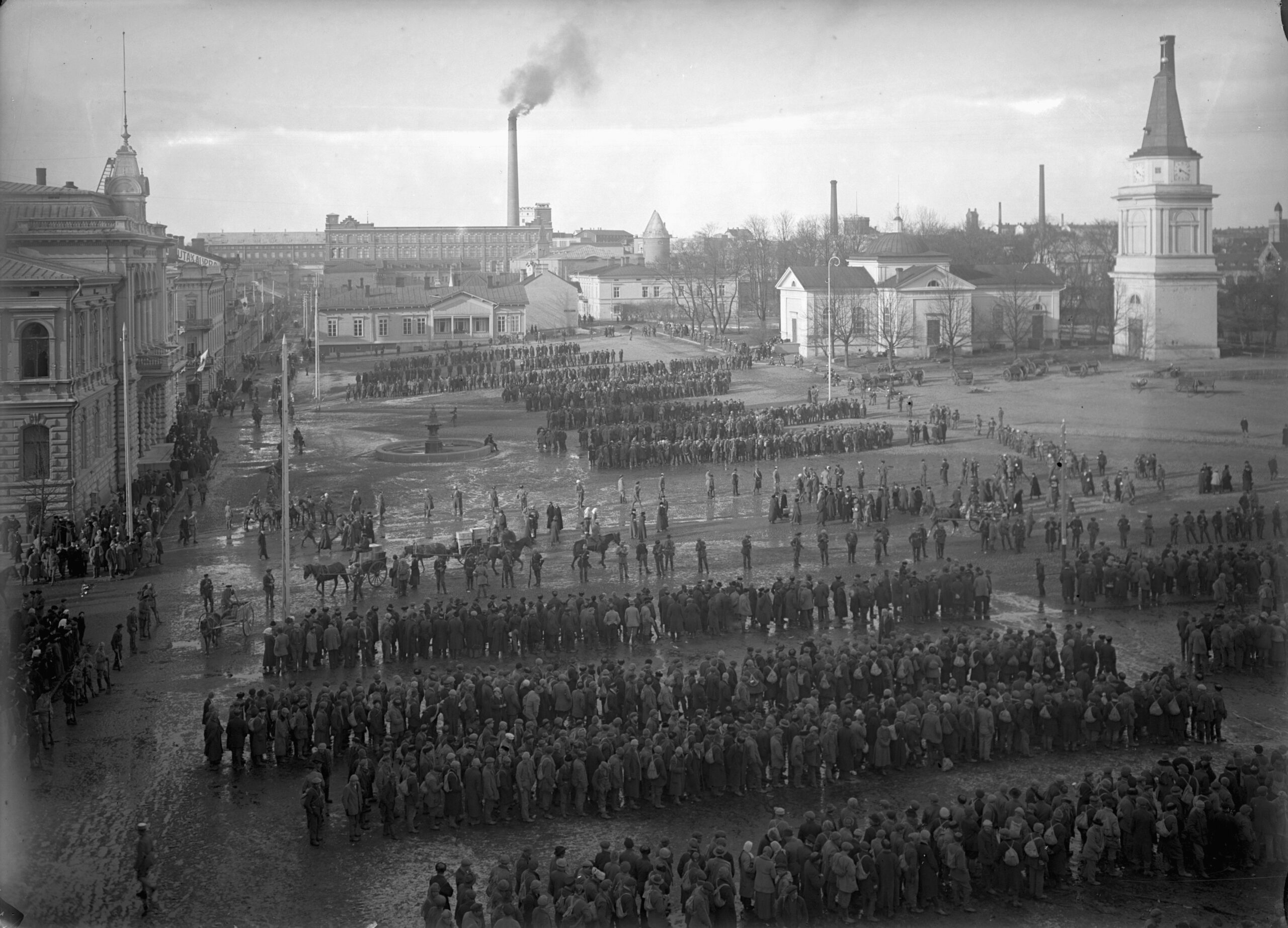The decisive battles of the Civil War took place in the city of Tampere, at the turn of March and April in 1918. After three weeks of fighting, Tampere fell under the control of the Whites on April 6, 1918. Approximately 11,000 captured Reds from the Battle of Tampere were gathered on the current Central Square and then marched to a prisoner camp established in the Russian barracks on Kalevankangas.
The Civil War came to an end on May 16, 1918, with the victory of the White Army. Prison camps were established in other locations as well. The largest ones were in Suomenlinna, Hämeenlinna, and Lahti, each housing over 10,000 people. Food shortages and hunger were severe, diseases were rampant, and executions of prisoners took place. Mortality rates in the prisoner camps were high. The mutual terror practiced during the war left a lasting impact on people’s hearts and minds for decades.

The Civil War was brief and bloody, leading to mutual distrust among the opposing sides for many years after the war’s conclusion. Initially, the defeated were prohibited from participating in politics, and many of their civic rights were revoked. Public remembrance or burials in church cemeteries for fallen Reds were not allowed. How the events of 1918 were remembered depended on one’s affiliation. For a long time, only the history written by the victors was acknowledged, but in the present day, the Civil War is extensively studied from various perspectives.
Following the Civil War, decisions had to be made regarding to the form of government for independent Finland. Monarchy had its supporters, and efforts were made to secure a king for Finland from Germany. However, Germany’s defeat in World War I changed the situation, and Finland became a republic led by a president. The first president, K. J. Ståhlberg, granted pardons to thousands of Red prisoners.
Political changes were implemented immediately after the end of the Civil War. The workday was shortened to eight hours, and taking part in local government became possible. Already in 1918, a law was passed allowing tenant farmers to redeem their farms as their own. Finland’s first parliamentary elections as an independent nation were held in 1919, and the Social Democratic Party, SDP, became the largest party – even though it was a labor party. In the 1920s, for example, Lex Kallio provided tenant farmers with the opportunity to redeem additional land. At the turn of the 1920s and 1930s, far-right movements tested Finnish society, but they did not succeed in overthrowing Finnish democracy. Unifying the people after the Civil War was a challenging task, and the choice of the political decision-makers.